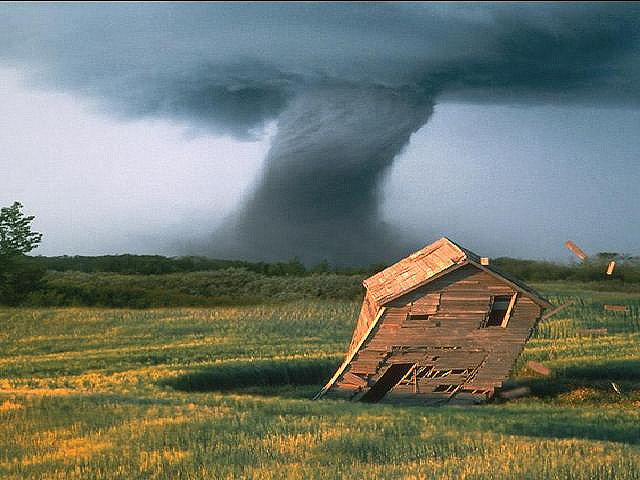
Tornado Forecast Study a Piece of the Loss Puzzle, Author Says
A new study suggesting El Niño and La Niña’s influence on U.S. tornado activity is just a piece of a larger puzzle that catastrophe modelers, insurance and reinsurance executives need to considering future loss scenarios, according to the study’s author.
“In order to understand what the future risk will be, understanding the variability itself is a critical step” says John Allen, research scientist at the Columbia University’s International Research Institute for Climate and Society .“We need to pay attention to what large scale climate factors that influence tornado and hail. But, in terms of losses, insurers end up paying for more for hail.”
Allen and fellow Columbia professor Adam Sobel recently published a study suggesting that cyclical interactions of El Niño and La Niña that occur in the winter months in the Pacific — known together as the El Niño-Southern Oscillation — can offer forecast signals tied to the spring tornado season in the U.S.
Simply put, an El Niño pattern can dampen tornado activity while an La Niña can increase the chance of severe storms.
“[Winter] ENSO conditions often persist into early spring, and consequently the winter ENSO state can be used to predict changes in tornado and hail frequency during the following spring,’ the study said. “Combined with our current ability to predict ENSO several months in advance, our findings provide a basis for long-range seasonal prediction of severe thunderstorm activity.”
Allen says that there has been an historic assumption that severe spring thunderstorms in the U.S. have been tied to linear climate patterns, but that the current study provides sound scientific evidence of the mechanism.
“Previous work has focused on tornado observations, but this shows there is an environmental, physical linkage,” he says. “You can actually see in winter months what is going to happen to the severe weather season spring.”
Allen adds that there while there has been a significant increase in the volatility of severe convective storm patterns in the U.S. over the past six years, research tying the change to global climate change remains open to interpretation. “How that projects into tornados is problematic, and it’s not a particularly clear around severe thunderstorms,” he says. “A lot more research that needs to be done.”
And while the study could arm federal and local governments in preparing for the possibility of an active tornado season to protect storm-prone populations months in advance, the use for insurance and catastrophe modeling firms is more nuanced.
“The one thing that we need to remember, and this is brought up in prior research, there is a question whether and increasing hazard could be matched to what we are seeing in terms of increasing losses,” Allen said. He added that insured and economic losses could be tied to how structures are currently built in the U.S , and the use of more “brittle” building materials.
As an example, Allen cited a 2010 hail storm in Phoenix that caused billions in losses as large air conditioning units not constructed to withstand 4-inch hail stones were damaged beyond repair.
“When it comes to insured losses, in many cases it comes to the structure, and being in the wrong place at the wrong time,” Allen said.
Risk Market News Newsletter
Join the newsletter to receive the latest updates in your inbox.





